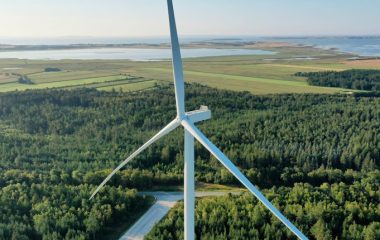
Photo: NOSBiH
Share
Share
Aggregation of distributed energy sources is experiencing an expansion in Bosnia and Herzegovina. Currently there are seven virtual power plants in the country, aggregating facilities with a total capacity of 120 MW, or more than all other Energy Community contracting parties combined. The Independent System Operator in Bosnia and Herzegovina (NOSBiH) foresees an increase to 250 MW by the end of the year.
Virtual power plants are also present in Croatia and Serbia. They made it possible for small producers of green energy in BiH, primarily solar power plants and hydropower plants, to sell their electricity on market at higher prices than under feed-in tariffs. It prompted their widespread exit from the schemes all over the region.
Nemanja Pandurević, general director of transmission system operator NOSBiH, noted that BiH currently has seven virtual power plants, which are also balance responsible parties, and explained electricity producers can choose how they want to sell electricity on the distribution grid level.
Pandurević: We expect virtual power plants to reach 250 MW in capacity
Speaking at the Trebinje Energy Summit – SET 2023, he said virtual power plants currently aggregate 120 MW in capacity.
He expressed optimism the trend would continue and reach maximum available capacity this year. It means all the producers connected to the distribution network, with an estimated combined capacity of 250 MW, would be aggregated.
Pandurević noted that under the feed-in tariff scheme, small power plants had to sell electricity to one of the three state-owned power companies with fixed prices via 12-15-year contracts.
The plan and realization of virtual power plants match 99%
With the energy crisis, and prices soaring in 2021, there was a need for producers to maximize profits, but there were no conditions for it, so NOSBiH, as Pandurević explained, prepared a model that enabled distributed production facilities to be aggregated. The condition for small power plants was to have an installed capacity higher than 1 MW.
Of note, NOSBiH adopted a decision in June to allow the aggregation of small power plants and their participation in the market.
Pandurević said the operator receives monthly reports from distribution system operators (DSOs) in 15-minute intervals and invoices any imbalances caused by virtual power plants.
The analysis of the deviation of the realization from the plan demonstrates that in 99% of the situations the plan is met, so NOSBiH charges small amounts for imbalance, Pandurević stressed.
Janković: It is important that the stability of the grid is not endangered
Marko Janković, electricity market chief at Serbia’s power grid operator EMS, said the focus of aggregation in BiH is on the production side.
The capacity aggregated by virtual power plants in BiH of 120 MW is, in his words, higher than in all Energy Community members put together.
He said he was satisfied to hear the concept is completely market-based and that market participants found an appropriate business model without jeopardizing the stability of the grid.
The following companies in BiH have the status of virtual power plants: EFT, Elektroprivreda BiH, Winter Wind, Hifa-oil, Renewable Energy Solutions BH, Vibar and Petrol BH Oil Company.









Really good thing, very positive example for the region from Bosnia and Herzegovina.